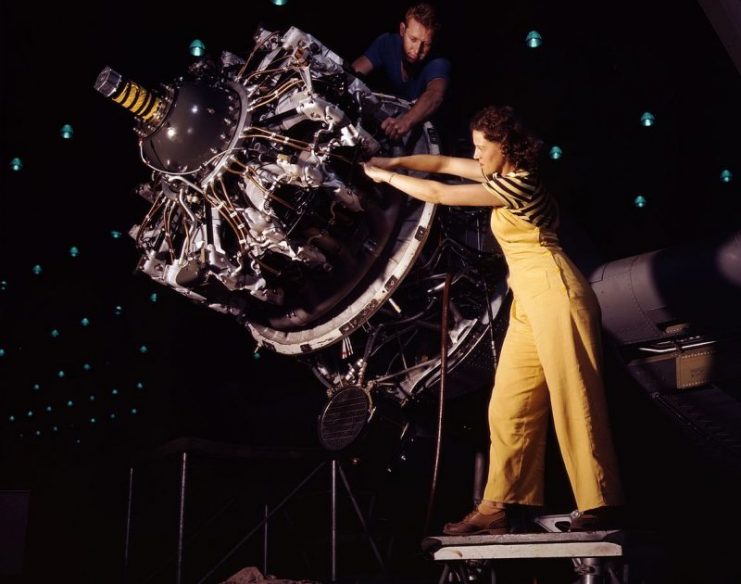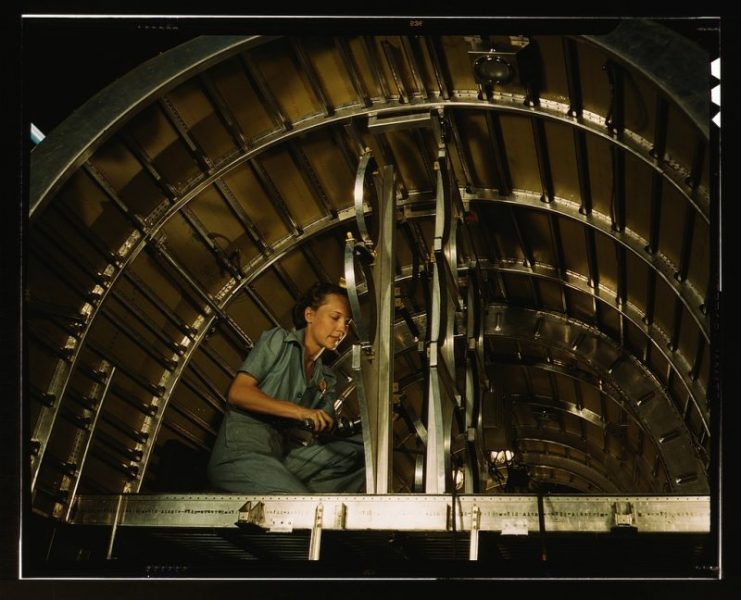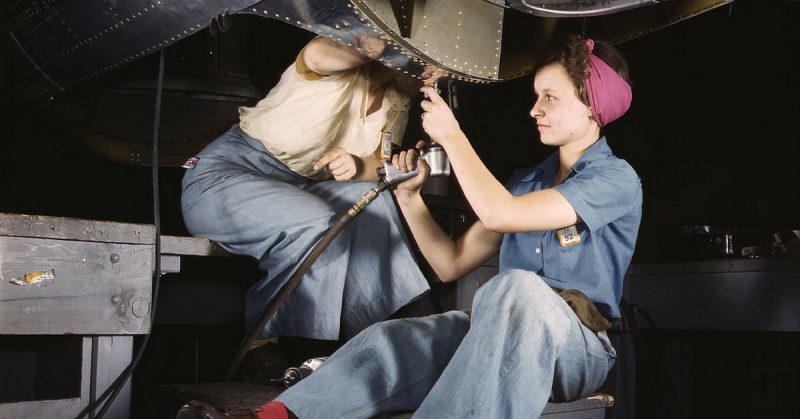Harry Connick, Jr. celebrated National Rosie the Riveter Day by bringing one of the original ‘Rosie the Riveters’ on to his show.
Mae Krier, 91, sat down with Connick to discuss the role of women in the WWII effort and how their contributions are finally being honored.
They also discussed what it was like for Krier to finally get to ride in one of the planes she helped to build. She said it only took over 70 years for her to get the opportunity! She had worked on the outside of the B-17s for years but had never actually been inside one. She was surprised at how small they are.
Krier stated that the work of women during the war proved how capable women are. Before 1941, she said, “it was a man’s world.” She went on to say that men did not understand what women were capable of, but that women proved their worth.
Connick asked Krier if she knew how iconic ‘Rosie the Riveter’ would become but she said they focused on the job at hand without concern for rewards. She did express disappointment that the women received no recognition when the war was over:
“The men came home to parades, and flying flags and Rosie came home with a pink slip.”
The women did not serve in the trenches, but they were the ones who built what the men needed to win the war.

In 2017, the US Senate officially declared March 21 to be National Rosie the Riveter Day which is intended to increase awareness about the 16,000,000 American women who worked during WWII.
The Rosie the Riveter character was created during the war to represent the women who joined the workforce to build planes and ships while the men who typically did that work were off fighting in the war.
She is depicted in the iconic poster featuring a woman wearing a blue work shirt with a polka-dot bandana wrapped around her head. The woman is posing, showing off her bicep under the phrase “We Can Do It!”
The inspiration for the poster has been a much-debated topic, but Naomi Parker Fraley who worked in a Navy machine shop was widely believed to be the subject of the poster. Fraley died in January at the age of 96.
Although Fraley may have been the first to be called ‘Rosie the Riveter,’ many women took their place on the assembly lines when their nation needed them.

Krier was 17 when she moved from North Dakota to Seattle, Washington and began working for the Boeing Company. After two weeks training on how to buffer a rivet, she began working on B-17 airplanes.
In 1944, she helped build 5 Grand, the 5,000th B-17 constructed during the war. The women were each allowed to paint their names on the plane and helped push it onto the tarmac.
https://youtu.be/dIVeiG8QXVo
Krier stated that when the men went off to fight in the war, the women went to work. While the1 men headed for the trenches, the women headed for the factories and shipyards. She said they all did what they had to do to win the war.
In April 1945, she married a Navy man, and they were together for almost 70 years.
During the war, Krier heard that Adolf Hitler had said that the Germans would have no trouble defeating the Americans because their women were spoiled and soft. She said that they worked all the harder after hearing that. “We sure showed him,” she said.
